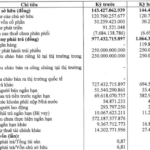The construction of Can Tho Bridge started on September 25, 2004 and was completed on April 24, 2010. It officially opened to traffic, becoming the longest cable-stayed bridge in Southeast Asia (with a main span length of 550m) and ranking among the top 10 longest cable-stayed bridges in the world.
14 years after its inauguration, the bridge still holds these two records, proudly spanning the Hau River.
The construction of the Can Tho Bridge was the result of nearly 2,000 days and nights of relentless efforts by Japanese and Vietnamese engineers and workers, under the steadfast guidance of local authorities and government leaders.
Funded with nearly VND 5,000 billion from the Official Development Assistance (ODA) of the Japanese Government and the corresponding capital of the Vietnamese Government, Can Tho Bridge became a symbol of the Vietnam-Japan cooperation in the field of infrastructure construction and a driving force behind the development of Can Tho city in particular and the Mekong Delta region in general.
Below are aerial images of Can Tho Bridge captured by Microsoft’s AI-powered application Copilot. Take a look.

As an iconic landmark of the Mekong Delta, Can Tho Bridge connects the two banks of the Hau River, replacing the long-standing Can Tho ferry. Since its opening, the bridge has shortened travel time and increased the transportation volume of goods and people between Ho Chi Minh City and Can Tho.

The entire bridge route (including the main span and approach roads) has a total length of 15.85km and a height of 175.3 meters. The main span has a cable-stayed structure measuring 1,010 meters in length, designed for a speed of 80 km/h, with a record-breaking cable-stayed section of 550 meters, the longest in Southeast Asia.

The bridge is designed with an inverse Y-shaped tower containing 216 cables. The cross-section of the bridge has a width of 23.1 meters (including four traffic lanes, each 3.5 meters wide, and two sidewalks, each 2.75 meters wide). The static clearance height for vessels is 39 meters, allowing easy passage for ships with a total load of up to 10,000 DWT.

The bustling scene of Cai Rang Floating Market can be seen below Can Tho Bridge. Voted as one of the “10 most impressive markets in the world” by the famous British travel magazine Rough Guide in 2016, Cai Rang Floating Market’s biggest attraction lies in preserving the unique cultural features of the river region. In 2016, the Ministry of Culture, Sports and Tourism recognized Cai Rang Floating Market as a national intangible cultural heritage.

As a symbol of the Mekong Delta, Can Tho Bridge is a popular tourist attraction. The charm of Can Tho Bridge is even more captivating when viewed at night. The multi-colored lights adorn the bridge, stretching endlessly over the Hau River. With its dazzling nighttime illumination, Can Tho Bridge is on the list of the most beautiful bridges in Vietnam.

Don’t just admire Can Tho Bridge at night, visit Can Tho in the dry season, from December to April each year. The advantage of visiting during this time is the opportunity to immerse yourself in the magnificent sunrise or sunset while viewing the bridge from Cai Rang Floating Market…

If you prefer a more peaceful and less crowded view, visit during the rainy season, which usually starts in May and ends in November each year. From the window of a high-rise building, while sipping a hot cup of Ca Phe Sua Da made from the famous Can Tho coffee, enjoy the fascinating sight of the “ribbon of steel” disappearing into the rain.

It would be another worthy option to visit the land of “white rice and clear water” in Can Tho during the fruiting season, which starts from May and lasts until April of the following year. Lychee, longan, durian, and mangosteen are some of the fruit trees that bring truly wonderful flavors to those who appreciate them.
Sources: Ministry of Construction, Canthotourism





































